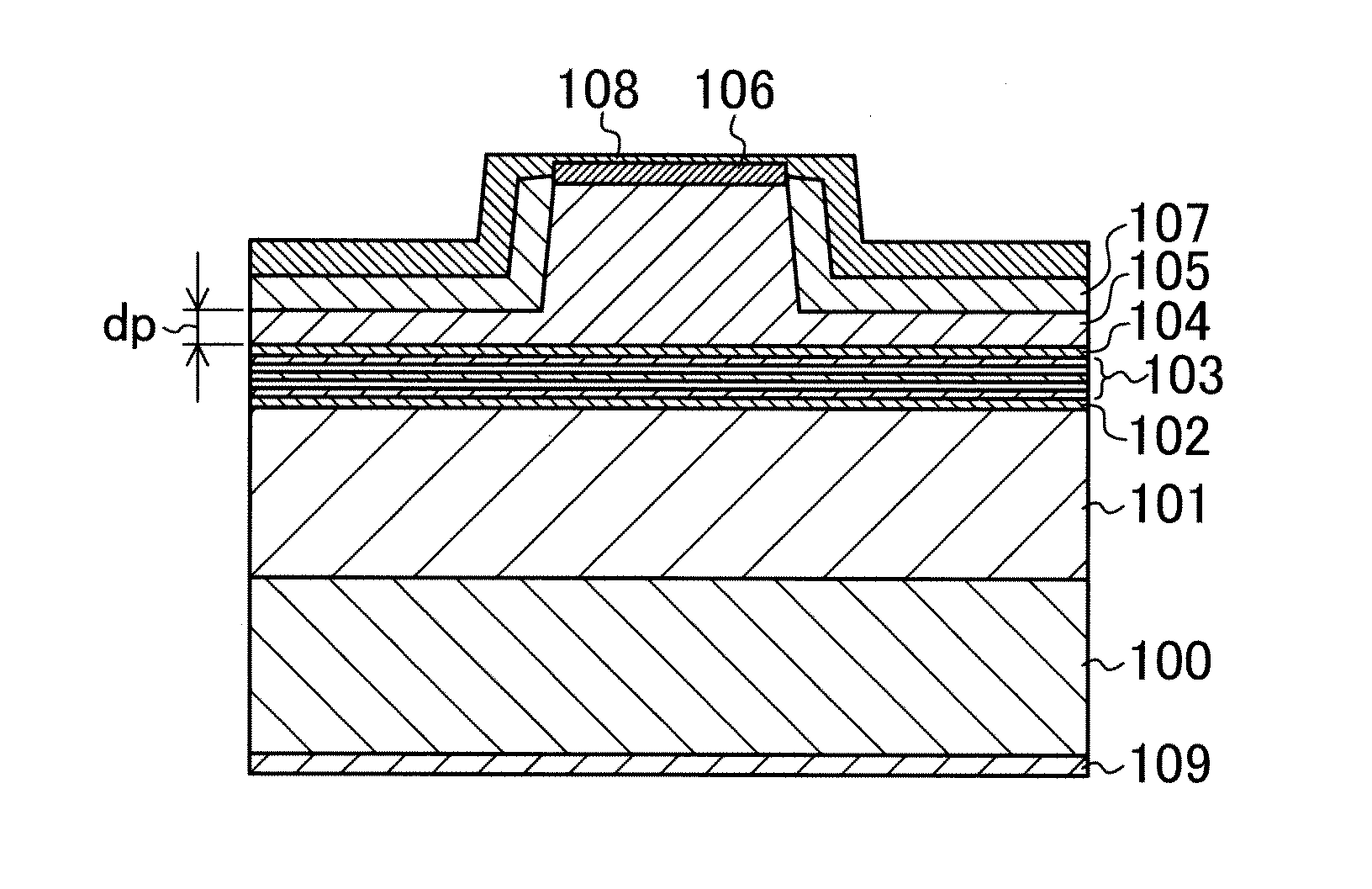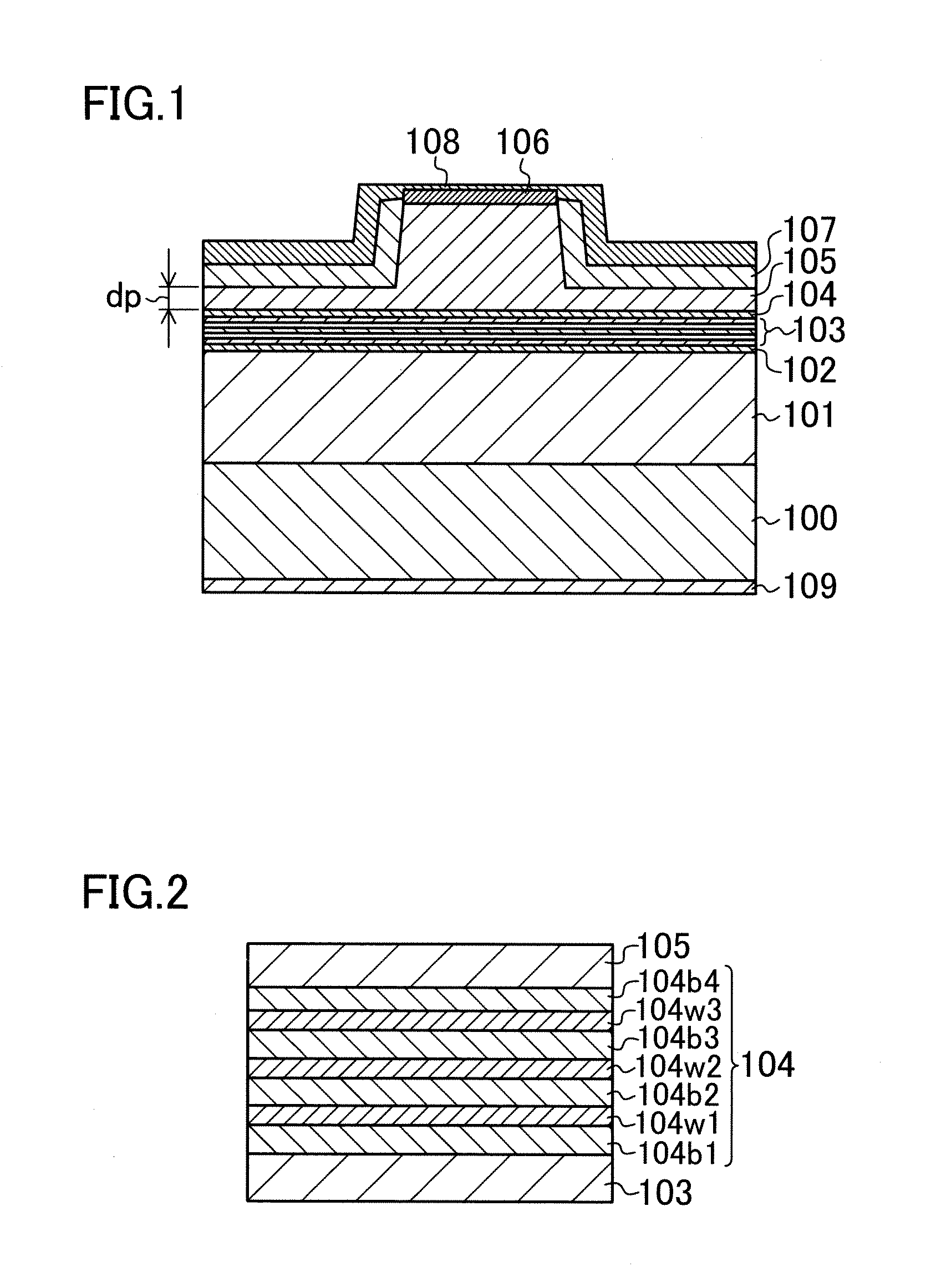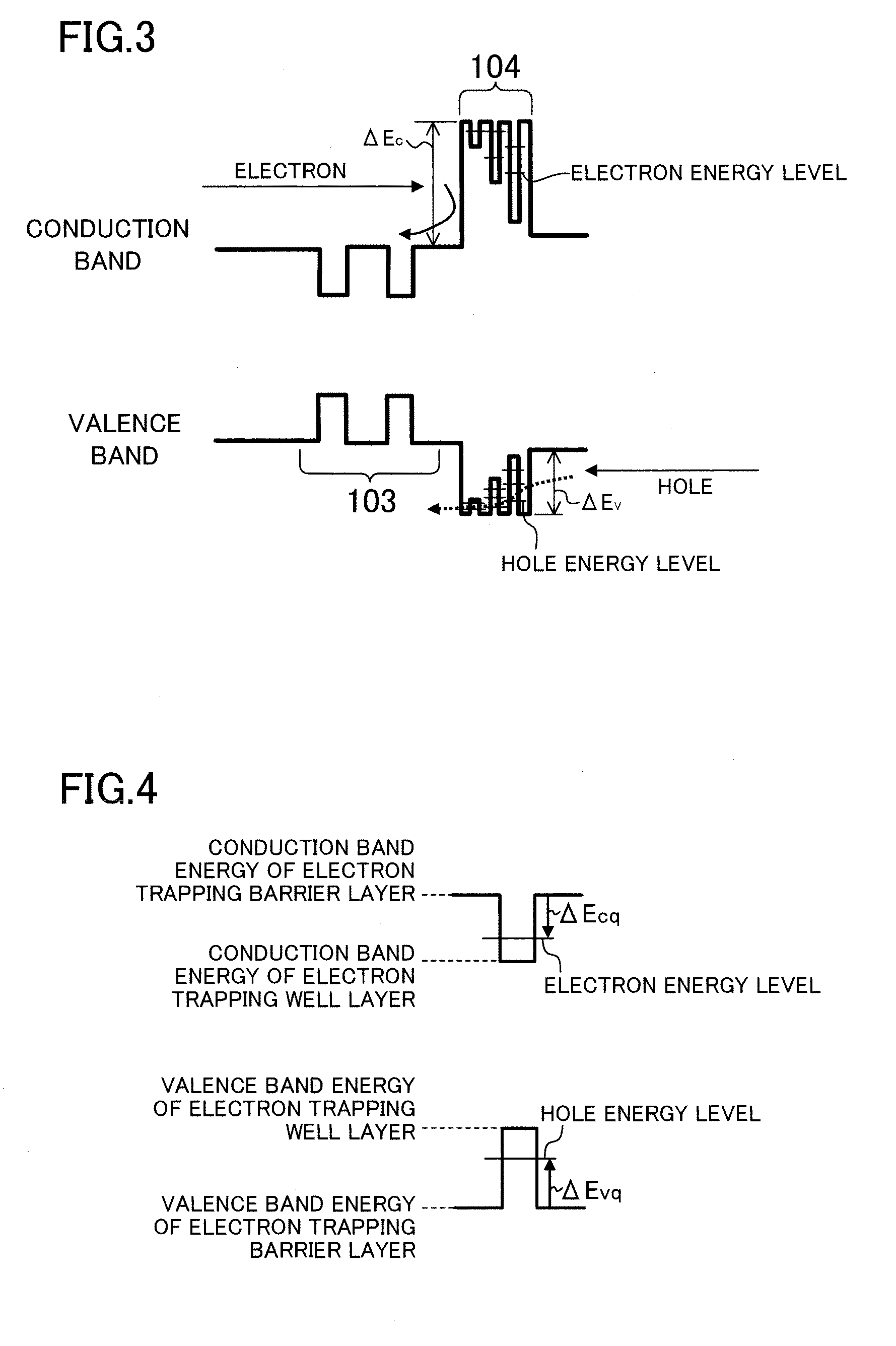Semiconductor light emitting device
a technology of semiconductor devices and light emitting devices, which is applied in the direction of semiconductor devices, lasers, semiconductor lasers, etc., can solve the problems of reducing reliability, increasing operating voltage, and increasing operating temperature and operating curren
- Summary
- Abstract
- Description
- Claims
- Application Information
AI Technical Summary
Benefits of technology
Problems solved by technology
Method used
Image
Examples
first example embodiment
[0058]A semiconductor light emitting device of the first example embodiment will be described below with reference to FIG. 1.
[0059]As shown in FIG. 1, for example, a 2.5 μm thick first cladding layer 101 made of n-type aluminum gallium nitride (AlGaN), and a 86 nm thick guiding layer 102 made of n-type AlGaN are sequentially formed on a gallium nitride (GaN) semiconductor substrate 100. An active layer 103 which includes a multiple quantum well structure, and is made of indium gallium nitride (InGaN)-based material, for example, is formed on the guiding layer 102, and a p-type quantum well electron barrier layer 104 is formed on the active layer 103. A second cladding layer 105 which is made of p-type AlGaN, and has a ridge is formed on the quantum well electron barrier layer104, and a 0.1 μm thick contact layer 106 made of p-type GaN is formed on a top surface of the ridge of the second cladding layer 105. A dielectric current block layer 107 which is made of SiN, and is transparen...
second example embodiment
[0085]A semiconductor light emitting device of a second example embodiment will be described below. In the second example embodiment, the same components as those described in the first example embodiment will not be described in detail, and only the difference between the second and first example embodiments will be described below.
[0086]In the second example embodiment, AlGaN layers having the Al composition ratio of 0.3 are used as the electron trapping barrier layers. The third well layer 104w3, the second well layer 104w2, and the first well layer 104w1 are made of AlGaN having different Al composition ratios of 0.05, 0.15, and 0.25, respectively. Different from the first example embodiment, the first well layer 104w1, the second well layer 104w2, and the third well layer 104w3 have thicknesses of 2 nm, 4 nm, and 6 nm, respectively.
[0087]Quantum levels of electrons and holes formed in each of the electron trapping well layers of the second example embodiment will be described b...
third example embodiment
[0092]A semiconductor light emitting device of a third example embodiment will be described below. In the third example embodiment, the same components as those of the first example embodiment will not be described in detail, and only the difference between the third and first example embodiments will be described below.
[0093]In the third example embodiment, AlGaN layers having the Al composition ratio of 0.3 are used as the electron trapping barrier layers, and 4 nm thick aluminum gallium indium nitride (AlGaInN) layers are used as the electron trapping well layers. The Al composition ratios of the third well layer 104w3, the second well layer 104w2, and the first well layer 104w1 are 0.05, 0.15, and 0.25, respectively.
[0094]The electron trapping barrier layers experience tensile strain due to the difference in lattice constant between the electron trapping barrier layers and the semiconductor substrate 100. When the Al composition ratio in the electron trapping barrier layers is i...
PUM
 Login to View More
Login to View More Abstract
Description
Claims
Application Information
 Login to View More
Login to View More - R&D
- Intellectual Property
- Life Sciences
- Materials
- Tech Scout
- Unparalleled Data Quality
- Higher Quality Content
- 60% Fewer Hallucinations
Browse by: Latest US Patents, China's latest patents, Technical Efficacy Thesaurus, Application Domain, Technology Topic, Popular Technical Reports.
© 2025 PatSnap. All rights reserved.Legal|Privacy policy|Modern Slavery Act Transparency Statement|Sitemap|About US| Contact US: help@patsnap.com



